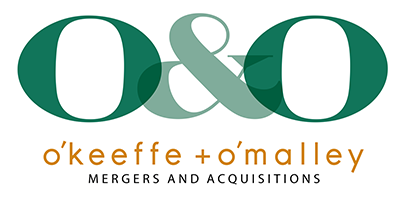When Selling, Look Through the Eyes of a Buyer
Mar 17, 2015
One of the single most important things a business owner can do when preparing to sell his or her business is to look at the company through the eyes of a buyer. Easier said than done, after years of hard work, blood, sweat and tears, and employees that are like family. But this shift in perspective will allow the seller to see exactly what needs to be done to prepare the company for sale at its maximum value.
For the sake of this discussion, let’s assume an owner wishes to sell the company within the next twelve months. This is a reasonable timeframe, as it typically takes about that long to put together an offering memorandum, find qualified buyers, weed out undesirable buyers, negotiate a letter of intent, negotiate a purchase agreement, and wade through the legal and financial aspects of a sale.
The following steps are key; remember, you are explaining the past and selling the future:
- Financial Preparation
A significant part of getting a business ready for sale is to analyze and maximize the true earning power of the company. If you have been operating your business to minimize profits and therefore, taxes, the past three to five years’ financial statements will need to be “re-casted.” Recasting is the process of examining your financial records and making legitimate adjustments of expenses that were non-recurring or were not indicative of what the business could have earned under different circumstances. A better solution would be to stop trying to minimize taxes and focus on maximizing earnings. One might pay 35-cents more on the dollar in taxes, but the selling price gain could be greater than tenfold.A properly re-casted balance sheet should accurately reflect the current status and fair market value of the business, its assets and liabilities and not raise any unnecessary questions. This does not mean changing the way you are running the business, but rather try and present the balance sheet according to the Generally Accepted Accounting Principles (GAAP) historically and going forward. Assets not related to the operations of the business should be removed.
- Reduce Risks (Real and Perceived)
Risk, whether real or perceived, lowers the value of the business in the eyes of buyers. Real risks should be identified and minimized or controlled. For example, one common risk is having one customer represent a disproportionate percentage of total sales. You can either diversify, or be prepared to justify the strength of the relationship. If your business or industry could pose environmental concerns for a buyer, conduct a Phase I environmental study prior to going to market. If there are problems, fix them and document the remediation for buyers. If there are no problems, you are starting from a position of strength. Keep a keen eye to anything that could be perceived as a risk to a potential buyer, and be ready to justify or eliminate what could become an obstacle to a sale.
- Documentation
If you already document every facet of your operation, you are ahead of the game. If that’s not part of your discipline, you can start right away. Write reports on your own business operation, as well as the industry and the market. A detailed business plan, policy manuals, employee training manuals, job descriptions, hiring policies, employee benefits, and records of internal communications will give a buyer great insight into your company. Read through all of your reports with a critical eye to see if there are negatives that could be eliminated or minimized. Remember to look at every document through the eyes of a buyer.
- Timing
Planning ahead allows you to choose the proper timing to sell your business. Two factors in timing the sale are market conditions and the seller’s personal plans. Most important, in terms of getting a premium price for your business, is to sell when the market is ripe for the sale. The best time to sell is when the business is great and getting better, not on a decline. Often a businesses' cycle may correspond to when the economy or stock market is strong and when interest and tax rates are low. That said, it’s also important to remember that value is usually maximized if the seller will stay for a one to three years after the sale. If those two factors don’t align, sell when the market is hot to get the best possible value.
Selling a business is a very involved, complex and time-consuming process. To get the best possible outcome, obtain a professional opinion of the value of the business, follow the guidelines listed above, have realistic expectations, and go to market looking at every aspect through the eyes of a buyer. For more advice, contact O’Keeffe & O’Malley.
